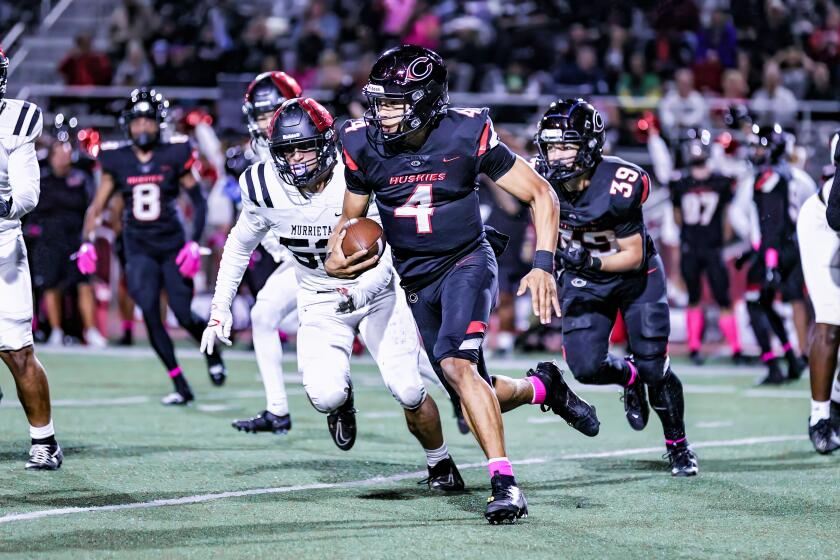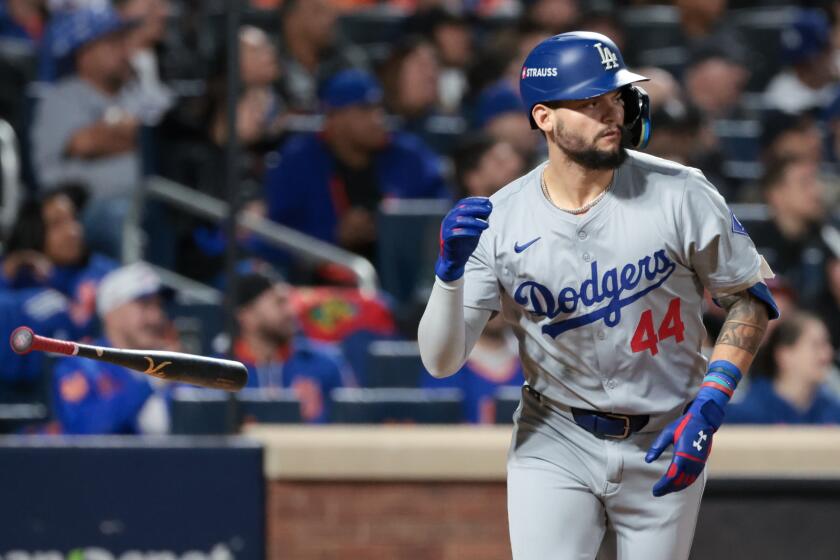Lost Angeles? : New Arena Could Revive Downtown --if City Would Get Its Act Together
Los Angeles hopes to strike a deal this week for a sports arena project that could lead finally to a revival of its downtown, or at least a significant part of it.
But even getting the deal done will be a test of whether Los Angeles is capable of helping itself. Negotiations over the project, infighting among City Council members and competition from other cities in the region are intense at the moment.
And beyond that looms the threat of Los Angeles’ bureaucracy, the city agencies that business people say can turn any project into a two-year endurance contest.
Yet the $240-million, 20,000-seat sports and entertainment complex at the site of the Convention Center could benefit the city immensely.
And all of Southern California has a stake in the proceedings. A Convention Center running a deficit--$19 million this year--because it has too few conventions and a blighted downtown bringing in lower tax revenues mean fewer resources for development of communities throughout the region.
“It’s important that the central city not decay,” says Michael Tennenbaum, a real estate investment banker.
So it’s worth looking at the proposed deal to see how promising things could be and to understand why downtown Los Angeles, which is at the hub of freeways and transit, could remain for so long a scruffy and ominous urban landscape rather than the glittering showplace of a major city.
The deal with the co-owners of the Los Angeles Kings hockey team--Edward Roski Jr., a local real estate developer, and Philip Anschutz, a noted Denver-based business investor--would bring the Kings and basketball’s Lakers to play in a new arena to be opened Sept. 1, 1999, at 11th and Figueroa streets, site of the North Hall of the original convention center.
The city of Los Angeles would sell $60 million of taxable bonds to buy the land and provide it for the project.
The developers have vision. “It will be an entertainment complex, not just a sports arena,” says John Semcken, a vice president of Roski’s firm, Majestic Realty. The arena would be equipped for pop concerts and other attractions, along with sports, so it could be in use 225 or more nights a year.
Also on the site would be a hotel, which would benefit the Convention Center--opened in 1993 at a cost of $500 million--and a complex of retail stores and restaurants.
The effect on neighboring areas of South Park and downtown could be salutary. “It would leverage the public investments already there, such as the Convention Center,” says John Kaliski, an architect and urban design specialist at the Santa Monica architectural firm, Aleks Istanbullu.
“It could be a success, USC could play its men’s and women’s basketball games there,” says Kenneth Leventhal of the E&Y; Kenneth Leventhal real estate firm.
“This project could be a catalyst for development along Figueroa and into other parts of downtown,” says David Abel, publisher of the Metro Investment Report and Planning Report newsletters.
No one should expect central Los Angeles to turn instantly into midtown Manhattan, a place where people stroll to theaters and restaurants. The Music Center has been downtown for decades, the Museum of Contemporary Art for years without any eruption of conspicuous urban night life.
Los Angeles, like many car-oriented cities of the West, is different from New York, of course. Still, it could do a better job of redeveloping its downtown area, making it safer and more attractive for people--which, in turn, would make its real estate more valuable. But the city gets in its own way, business people charge.
Delay and disunity are costly. “It will take this arena two years to get all the environmental approvals and other needed permits from the Los Angeles bureaucracy,” says a prominent real estate man. “Other cities can approve a project in six weeks.”
City Council members squabble. The arena deal isn’t final yet because council members reportedly are still angling for benefits for their individual districts.
Also, Inglewood, where the Kings and Lakers play now, is raising its bid to keep the teams in a new arena to be built near Hollywood Park. And other sites near downtown are making last-minute bids too.
Smaller cities get the job done more efficiently, although renewal is never easy. Long Beach remade its downtown over many years, building a Convention Center that ran deficits and an entertainment complex that went underutilized. But its City Council and city manager showed patience and unity of purpose.
And Long Beach is now succeeding. Pine Avenue, a skid row no longer, is a well-used restaurant row today.
A similar unity of purpose characterizes Anaheim’s efforts to expand its Convention Center. On a smaller scale, Santa Monica and Pasadena have remade long neglected streets into urban gathering places.
If the sports arena deal goes through, it could be the start of a similar renewal for Los Angeles.
In that regard, the city does have advantages as a hub of transportation with a lot of people driving around it every day and night.
The proposed sports arena will cost roughly $100 million more to build at the Convention Center than it would have in Inglewood. Why are developers prepared to pay that? Because they stand to make more money in Los Angeles from signing rights on the structure--advertising to be seen by more than 1 million daily passersby on the freeways.
Dallas and San Francisco first used signing rights for stadiums. Los Angeles, asleep at the switch, didn’t do so when the Convention Center opened in 1993. Maybe what the city really needs to renew itself is for the people who run the place to stop squabbling and start thinking.
(BEGIN TEXT OF INFOBOX / INFOGRAPHIC)
Investing in Downtown The Community Redevelopment Agency has spent millions to make downtown Los Angeles more attractive to both businesses and consumers since it began renovation efforts in the Bunker Hill area in the mid-1960s. A look at some of the agency’s investments: Area renovated: Central Library
Money allocated, in millions: $160 Area renovated: Bunker Hill
Money allocated, in millions: 150 Area renovated: Convention Center
Money allocated, in millions: 125 Area renovated: Skid Row
Money allocated, in millions: 100 Area renovated: Historic Core
Money allocated, in millions: 80 Area renovated: South Park
Money allocated, in millions: 60 Area renovated: Little Tokyo
Money allocated, in millions: 20 Area renovated: Parking garage for Seventh Street Marketplace
Money allocated, in millions: 12 Source: Community Redevelopment Agency Researched by JENNIFER OLDHAM / Los Angeles Times
More to Read
Go beyond the scoreboard
Get the latest on L.A.'s teams in the daily Sports Report newsletter.
You may occasionally receive promotional content from the Los Angeles Times.










